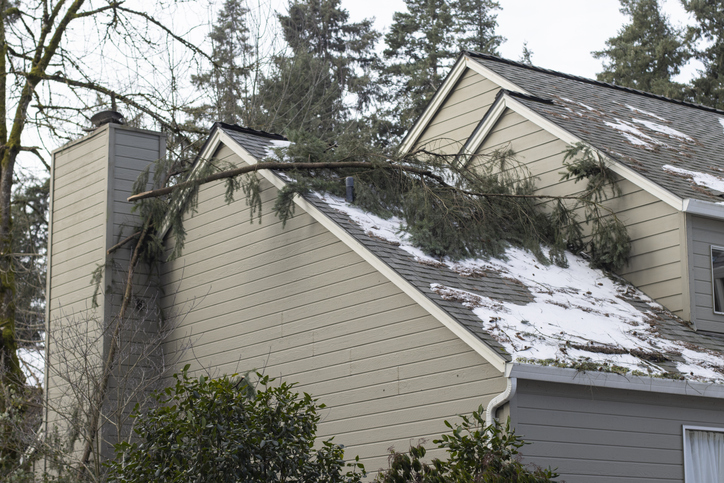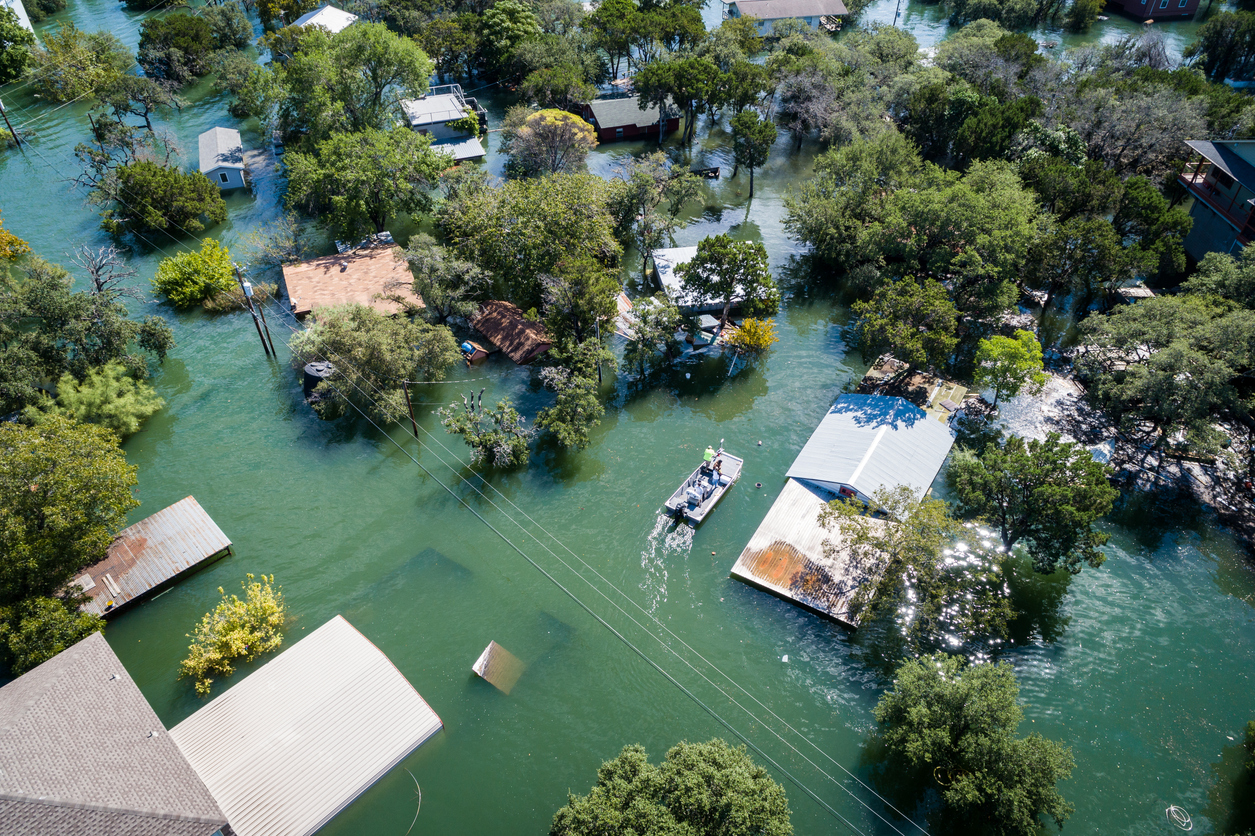Category: Insurance Advice
How to Prepare for College Living: A Survival Guide for Incoming Students
February 15, 2025

Congratulations! You’ve been accepted into college, and soon, you’ll embark on one of the most exciting adventures of your life, along with 16 million others. But before you start dreaming about campus life, late-night study sessions, and newfound independence, there are some practical steps to ensure a smooth transition. From dorm essentials to financial planning, this guide will help you prepare for college living.
1. Master the Art of Budgeting
Living on your own means managing your finances wisely. Here’s how to stay on top of your budget:
- Create a Budget: Track your expenses, including tuition, rent, food, transportation, and entertainment.
- Use Budgeting Apps: Apps like Mint, YNAB, or PocketGuard can help you stay organized.
- Open a Student Bank Account: Many banks offer students accounts with low or no fees.
- Look for Discounts: Your student ID is your best friend—use it for travel, entertainment, and shopping discounts.
2. Pack Smart: The College Essentials Checklist
You don’t want to arrive at college and realize you forgot something crucial. Here’s what to bring:
- Dorm Room Must-Haves:
- Bedding (twin XL sheets, comforter, pillows)
- Storage bins and organizers
- Desk lamp and power strips
- Laundry hamper and detergent
- Shower caddy and flip-flops
- Tech Gear:
- Laptop and chargers
- Noise-canceling headphones
- Portable hard drive or cloud storage subscription
- Kitchen Supplies:
- Mini fridge (if allowed)
- Microwave or coffee maker
- Reusable water bottles and utensils
- Emergency Kit:
- First aid supplies
- Medications
- Flashlight and extra batteries
3. Set Up Your Health & Insurance Plan
Make sure you have a solid plan in place for medical needs:
- Health Insurance: Check if you’re covered under your parent’s plan or if your college offers coverage.
- Locate Healthcare Providers: Know where the nearest doctor, dentist, and urgent care clinic are.
- Stock Up on Essentials: Pack prescription medications, vitamins, and a basic first-aid kit.
4. Learn Basic Life Skills
College is a time to gain independence, so mastering basic skills will help you thrive:
- Cooking Basics: Learn how to make simple meals to save money and eat healthier.
- Laundry 101: Know how to separate colors, use detergent, and read washing machine settings.
- Time Management: College life is busy—use planners or apps to manage assignments and social activities.
5. Prepare for Roommate Life
Sharing a living space can be a challenge, but good communication helps:
- Set Boundaries Early: Discuss sleep schedules, cleaning duties, and guest policies.
- Be Respectful: Small gestures, like cleaning up after yourself, go a long way.
- Resolve Conflicts Maturely: Address issues directly and respectfully to maintain a positive environment.
6. Get to Know Campus Resources
Colleges offer plenty of support services—take advantage of them!
- Academic Support: Visit tutoring centers and writing labs.
- Mental Health Services: Many colleges offer free or low-cost counseling.
- Career Services: Start networking and building your resume early.
- Student Organizations: Join clubs to meet new friends and enhance your college experience.
College is a time of growth, challenges, and unforgettable experiences. By planning ahead, you can make the transition smoother and set yourself up for success. Embrace the adventure, stay organized, and don’t hesitate to ask for help when needed. You’ve got this!
InsureYouKnow.org
College graduation prompts transitioning from a school-based existence to one replete with adult responsibilities. By preparing for the unforeseen future, college grads who do their homework and keep their records at insureyouknow.org, can begin living their lives to the fullest.
Is Your Home Ready for Extreme Weather?
January 1, 2025

From wildfire season with smoky air to higher temperatures and unexpected blackouts during freezing temps, the reality of extreme weather conditions is causing homeowners to better prepare their homes. While every homeowner should feel safe at home, a recent survey by Certain Teed revealed that less than 48% of people feel confident in their home’s durability in the face of extreme weather.
The good news is that smart updates will bring peace of mind and add value to your home. While some projects cost more money and time than others, there are several that require less of an upfront investment. No matter your budget, here are five easy home improvement areas to consider to protect your home and feel safer during weather events.
HVAC Systems Can Protect Against Temperatures and Poor Air Quality
Because people spend 90 percent of their time indoors, the quality of your home’s indoor air is crucial to the quality of your home life. One way homeowners can prepare for extreme weather and climate events is to make sure they have a reliable and well-maintained HVAC system in place. While it can be difficult to predict when climate-related issues may happen, an HVAC system can maintain inside temperatures, withstand harsh weather outside, and provide filtration that improves indoor air quality no matter what unfolds.
Preventative maintenance on your HVAC system and changing the filter every 30 to 90 days will help prolong the life and quality of your investment. Keeping your system at or above 64 degrees Fahrenheit during the colder months also helps prevent expensive issues like frozen and burst pipes.
Choose the Right Roofing Materials For Your Climate
Roof upgrades significantly increase your home’s resilience as well as its value. “The roof is the first line of defense on a home,” says Teed Lucas Hamilton, manager of applied building science at Certain. “It is important to select the right materials for your climate,” he says. Impact-resistant roofing, solar reflective shingles to combat rising temperatures, and fire-resistant materials are all things to consider when choosing roofing materials. In areas where strong wind is a possibility, hurricane fastening and straps can also further secure your roof.
When updating the roof, take into account the gutters. Simple add-ons like leaf filters help prevent blockages so that water doesn’t back up during heavy rainfall. When flooding is a concern, gutters should direct drainage away from the home’s foundation. Too much water around the foundation can lead to serious structural issues in the future, such as cracks in the foundation. A sump pump, which runs automatically to keep water out of basements and away from the foundation, is another wise investment in areas with heavy rain and storms.
Consider Window Updates or Replacements
In areas where debris impact is an issue, shutters that can cover existing windows ahead of a storm can safeguard a home during large storms. Impact windows, which have a heavy-duty frame and glass that’s engineered to remain intact even if it breaks in a collision, are another option, but depending on the number of windows your home has, they can get expensive.
Less expensive alternatives to shutters and window replacements include sealing existing windows and applying tints.
“First, use caulk to seal up any holes and cracks on the outside. Then apply weatherstripping and use a window or door insulation kit to block the cold and heat from the inside,” Hamilton says. “These changes help strengthen the barrier between your home and the outdoors, saving on heating and cooling and keeping the elements outside.”
Applying window tinting is another example of an inexpensive update that can block up to 80% of summer solar heat while also keeping some heat inside during winter months. Updates such as these protect from weather and increase energy efficiency by creating a better barrier between your home and the outside elements.
Make Simple Exterior Updates
Steel doors, which are made of more durable materials than some more elaborate door styles, upgrade a home’s entry points by withstanding storms. When certain updates, such as replacing every window in the house, are not in your budget, replacing the home’s main entry points with stronger doors can be a good place to start.
Changing the color of your exterior paint is another affordable update that can help with temperature control. “You might think that choosing the exterior color of your home is only about picking what color you like best,” says Angie Hicks, co-founder of Angi, formerly known as Angie’s List. “The climate you live in is crucial to picking the right color.”
In hot climates, light colors will help to reflect the sun and keep the interior cool, while those who live in climates prone to extreme colds should choose darker tones to retain heat better.
Maintenance is Key to Safeguarding Your Property
With increased extreme weather events, your home could be damaged slowly over time. It becomes more important to inspect your home for changes and keep up on maintenance to prevent larger repairs and damage down the road. Checking your roof after storms, such as noting any cracks, sagging, or debris in the gutters, is an important part of keeping your roof resilient during the next event. Trees around your home should also be checked for cracks in large branches or soggy soil around the roots, as those should be addressed to prevent damage in a future storm. Gutters should also be cleared regularly to prevent blockages, as well as collect debris from the yard that could become projectiles.
Insureyouknow.org Make sure you’re aware of how your community issues weather alerts. While some use outdoor sirens, others depend on media and smartphones to alert residents of severe storms. No matter what kind of hazards your community may be prone to, the National Weather Service recommends developing a plan with your family ahead of time, such as knowing where your emergency meeting place is or where the safe room is in your home. Safe rooms are usually those without windows at the lowest level of your home. In the event that your home is compromised, Insureyouknow.org can protect all of your vulnerable paper documents by ensuring digital access, providing you with one less thing to worry about so that you may focus on the safety of yourself and your loved ones.
Planning for the Care of Your Adult Child on the Spectrum
April 1, 2023

Today marks the start of National Autism Awareness Month. For parents who have children with autism spectrum disorder (or ASD), it is imperative that they begin to plan for their future now. The CDC recently reported that approximately 1 in 36 children in the U.S. is diagnosed with ASD. Though it’s not something anyone wants to think about, every family should prepare for the day they are no longer around to care for their loved ones, especially those with disabilities. The most important part of designing a care plan is to utilize the help of professionals who specialize in the care of special needs. Since the process can be overwhelming,
“It’s essential to work with specialists in this type of planning,” said AndrewKomarow, founder of Planning Across the Spectrum in Connecticut. When working with a specialist, parents should let them know what they want for the child, so that a specialist can tell them what is right for their situation.
Financial Planning
For many, the most intimidating portion of planning for the care of a special needs child is likely the financial aspect. People with disabilities usually qualify for Government services, such as Social Security Income (SSI), Social Security Disability Insurance (SSDI) and Medicaid, but sometimes that may not be enough. Many government services have income limitations, so it’s very important to set up supplemental income, such as personal funds and life insurance, properly in order to avoid the disqualification of government aid. A special needs, or supplemental needs, trust will hold the assets of a person with disabilities without costing them their government benefits; another financial option is an ABLE account, that allows savings up to $100,000 without losing government benefits.
To find a planning specialist that is trained in the care of those with special needs, parents may check the websites of the National Elder Law Foundation and Academy of Special Needs Planners.
Housing
When it comes to housing, “It’s more important to look at the individual,” Komarow said. “What interests and supports do they need?” Parents should think beyond their child living in the family home or with other family members. It’s important to consider how independently functioning they are and which communities will best serve their needs. In other words, instead of parents thinking about where they would like to retire, they should be looking at areas that their child can thrive in after they pass away.
There is a trend toward more community-based living, Gordon Homes with WestPoint Financial in Indianapolis points out. “State-administered Medicaid HCBS waiver programs allow people with disabilities to live in a house or apartment,” he said. A planning specialist will know about options such as these and be able to direct parents toward a solution they can be comfortable with, and their children, if able to, should always be brought into this conversation.
Designating a Care Team
How independently functioning a child with ASD is will determine what kind of care team needs to be put in place. A trustee will help to manage the trust on behalf of the child. They should be someone who is responsible, cares about the child, and will outlive the parents. A guardian or conservator would make all of the decisions regarding an individual’s financial and personal affairs. With a power of attorney, both they and the individual will be able to make decisions together. If able, the child should always be included in the decision-making process, because they should feel just as comfortable as their parents are with the designated care team.
Compiling Information for Caregivers
Marianne Ehlert of Protected Tomorrows, who works with families of people on the autism spectrum to plan for adult living, knows that, “Usually, parents or guardians of a teen understand what that child needs.” It will be important to determine whether or not a child will have the skills they need as a young adult to function independently, such as managing finances, scheduling care appointments, managing personal hygiene, and maintaining the shopping, cooking, and cleaning at home. This will also help determine what sort of living conditions they will need. Will they live with family, alone with minimal support, or will they need to live at a full-time care facility? A statement or letter of wishes, though not a legally-binding document, will serve as a guide for those who will care for your child. It should include all of the child’s care instructions, including medical needs, financial benefits, residential arrangements, and even daily routines.
Planning While Your Child is Still Young
When planning happens early, parents can learn about beneficial programs that their child may be eligible for, oftentimes at their own school. A child’s education can actually be designed to support their plans for the future. Special Needs Planning expert Phillip Clark points out that many planning processes focus on the care of the child once the parents are gone, but planning should be focussed on the child thriving both in the future and now. In order to succeed in the future, children need support now that will help them achieve all of their goals. Families should envision what they want for their child and then determine what needs to be done in order to make that happen.
Not only can planning provide caregivers with priceless peace of mind, but it can also lead to the discovery of resources that will help children with ASD flourish now. Since the planning process can be long, Insureyouknow.org can help parents stay organized by storing all of their documents in one place, such as financial information, medical records, and detailed care instructions.
Preparing for a Flood Before Disaster Strikes
October 15, 2022

Flooding is the most common and most damaging natural disaster in the country. In Florida, where Hurricane Ian’s floodwaters turned towns into rivers, flood risk is higher due to the state’s frequency of storms and proximity to water. Despite this, most insurance policies do not automatically cover flooding. No matter where you live, you should check your auto and homeowner’s or renter’s insurance policies as an initial step in preparing for a flood to keep you and your loved ones safe when a flood interrupts your lives.
Determining Your Risk Level
To find out the risk level of your property location, visit FloodSmart.gov/Flood-Map-Zone.
Because research has found that FEMA’s flood maps underestimate the danger in some areas as climate change advances, homeowners and renters unaware of their level of risk should act on the following points:
- Are you in a flash-flood-prone area? Contact the local county geologist or county planning department to find out if your home is in a flash-flood-prone area or a landslide-prone area.
- Make a communication plan and a disaster plan for your family.
- Plan and practice a flood evacuation route with your family. Ask an out-of-state relative or friend to be the “family contact” in case your family is separated during a flood. Make sure everyone in your family knows the name, address, and phone number of your contact person.
- Stay informed. Learn about your community’s emergency plans, warning signals, evacuation routes, and locations of emergency shelters.
- Inform local authorities about any special needs, such as elderly or bedridden people, or anyone with a disability.
Preparing Your Home for a Flood
- Make sure you secure or protect any hazards in your home before the flood strikes.
- Be prepared to turn off electrical power when there is standing water, fallen power lines, or before you evacuate. Turn off gas and water supplies before you evacuate. Secure structurally unstable building materials.
- Buy a fire extinguisher if you don’t already have one. Make sure your family knows where it is and how to use it.
- Buy and install sump pumps with backup power.
- Have a licensed electrician raise electric components (switches, sockets, circuit breakers, and wiring) at least 12″ above your home’s projected flood elevation.
- For drains, toilets, and other sewer connections, install backflow valves or plugs to prevent floodwaters from entering.
- Anchor fuel tanks can contaminate your basement if torn free. An unanchored tank outside can be swept downstream and damage other houses.
Creating an Emergency Supply Kit
Stock your home with supplies you may need during the flood by creating an emergency supply kit. Visit the CDC’s Personal Health Preparedness page for a list of supplies you’ll want to include in your kit.
Preparing Food and Water Supplies
Make sure you and your family have enough safe food and water (for drinking, cooking, and bathing) available in the event of a flood. For more information, visit Food and Water Needs: Preparing for a Disaster or Emergency.
Reentering Your Flooded Home
When returning to a home that’s been flooded after natural disasters such as hurricanes, tornadoes, and floods, be aware that your house may be contaminated with mold or sewage, which can cause health risks for your family. See the Centers for Disease Control and Prevention’s guidelines for reentering your flooded home.
Reviewing Flood Insurance Options
Although you can purchase flood insurance at any time, waiting until a hurricane or major storm is threatening your home may be too late. Many policies take at least 30 days after purchase to take effect.
The National Flood Insurance Program is a pre-disaster flood mitigation and insurance protection program designed to reduce the escalating cost of disasters. This program makes federally backed flood insurance available to residents and business owners. Standard flood insurance by the National Flood Insurance Program generally covers physical damages directly caused by flooding within the limits of the coverage purchased. Private providers may have higher limits or broader coverage compared to National Flood Insurance Program policies.
Regardless of which policy you select for your business or family, any coverage is better than none. If your property experiences flooding impacts from a disaster, it is not guaranteed you will be able to receive federal assistance. If your area has not received a Presidential Disaster Declaration that makes federal assistance available under FEMA, you will not receive federal assistance.
When there is an official Presidential Disaster Declaration, National Flood Insurance Program policyholders are encouraged to apply for FEMA disaster assistance in addition to their flood insurance claim. For more information, visit National Flood Insurance Program or call1-800-621-FEMA.
Filing a Flood Insurance Claim
Flood insurance claims can be filed anytime you experience flooding on your property and can cover both a property and its contents.
If you need to file a flood insurance claim, be informed and prepared so that recovery can move quickly and smoothly. Before a disaster strikes, have updated photos of your home or business so that insurance providers can clearly examine your property and belongings. If your property has experienced flood impacts, take extensive photos of the damages before cleaning up. This will allow insurance providers to compare before and after photos to determine the extent of damages and arrange the best claim payment possible. As you’re cleaning, make a detailed list of lost or damaged items. If you have original receipts for items, hold onto those for documentation in your claim. After gathering all the necessary information, contact your insurance company to begin filing your claim.
InsureYouKnow.org
At InsureYouKnow.org, file your auto, and homeowner’s or renter’s insurance policies, photos before and showing flood damage, an inventory of your home and possessions, and your checklists of supplies needed for emergency events. If you are impacted by a flood, also keep track on this portal of your insurance claims and interactions with your insurance company and FEMA.
Shopping for SHOP Coverage
May 15, 2022

Signed into law in 2010, the Affordable Care Act changed many regulations affecting small businesses and insurance. The law established the Small Business Health Options Program (SHOP) for small employers —generally those with 1–50 employees—who want to provide health and dental coverage to their employees affordably, flexibly, and conveniently.
Qualifications to provide SHOP coverage
Find out on the HealthCare.gov website if your business or non-profit organization qualifies for SHOP by meeting the following four requirements:
1. You have 1-50 full-time equivalent employees (FTEs)
- Use the FTE Calculator to see if you qualify. Note: To qualify for SHOP, you must have at least one FTE employee other than owners, spouses, and family members of owners and partners.
2. You offer coverage to all full-time employees—generally, workers averaging 30 or more hours per week
- You don’t have to offer coverage to part-time employees—those averaging fewer than 30 hours per week—or seasonal workers.
3. You enroll at least 70 percent of the employees to whom you offer insurance
- Employees with other health coverage aren’t counted as rejecting your offer.
- Use the SHOP Minimum Participation Rate Calculator to see how many of your employees must accept.
- Some states have different minimum participation requirements. See if this affects you.
- If you don’t meet your minimum participation requirement, you can enroll between November 15-December 15 any year. During this time, the participation requirement isn’t enforced.
4. You have an office or employee work site within the state whose SHOP you want to use
- Visit this page, select your state, and see how to access SHOP insurance in your state.
- See what to do if your business operates in multiple states.
- If eligible, you don’t have to wait for an open enrollment period. You can start offering SHOP coverage to your employees any time of year.
Reasons to offer SHOP coverage
- SHOP insurance gives you choice and flexibility to:
- Offer your employees one plan or let them choose from multiple plans.
- Offer only health coverage, only dental coverage, or both.
- Choose how much you pay toward your employees’ premiums and whether to offer coverage to their dependents.
- Decide how long new employees must wait before enrolling.
- You can get the information you need in one location. You can make an informed decision about your SHOP insurance options with the tools at HealthCare.gov where you can compare plans and prices and find out if you qualify for SHOP.
- You can use your current SHOP-registered agent or broker or find an agent or broker in your area to help you enroll in coverage.
- You may be able to get the Small Business Health Care Tax Credit. Enrolling in SHOP insurance is generally the only way for eligible small employers to take advantage of the Small Business Health Care Tax Credit. You may qualify if you have fewer than 25 FTE employees making an average of about $56,000 or less. See how much your business could save. Updated IRC guidelines for small business health care tax credit and the SHOP marketplace can inform you if you are a small employer.
InsureYouKnow.org
Whether you are an employer or an employee in a small business, you may find it helpful to review SHOP coverage how-to guides, fact sheets, tools, and other resources. After making SHOP health insurance decisions, you can keep your records about the best plan for you and its costs, benefits, and features at insureyouknow.org.
Track Your Gifts on a Home Inventory
December 14, 2021

Lucky you! You’ve been nice, not naughty, so, you may be rewarded with gifts galore this holiday season. What’s on your wish list—a smart TV, a laptop computer, or a sporty new vehicle? In all the excitement of opening and enjoying your generous bounty, remember to keep track of your new acquisitions by adding them to your home inventory. If you’ve never compiled a home inventory, you can start with recent gifts and then add older possessions. You’ll also want to update your home inventory regularly and add new items or delete possessions you no longer own.
Why Should You Maintain a Home Inventory?
In the event of a burglary, fire, or another disaster, if you have an up-to-date home inventory, you’ll be able to file a detailed insurance claim quickly, settle faster, and receive compensation promptly. You also should review the current value of items you own in case you need to increase your home insurance coverage.
What Should You Include in a Home Inventory?
- A description of each item you possess, including the make, model, and serial number
- The estimated value of the item/replacement cost
- Appraisal or cost at the time of purchase
- Purchase date
- Receipt and source of purchase
- Photos of each item taken with your cell phone or digital camera
- Detailed description about the item if received as a gift
How Do You Make a List?
Here are some suggestions to help you organize your list:
- By room. Choose a room and list all the contents. For example, start in your living room and list everything, like your TV, sofa, recliner, and side tables. Remember to list even the mall stuff, like books, knickknacks, and decorations on your shelves.
- By groups of items. Or group together items like antiques, artwork, clothes, collections, jewelry, kitchen items, furniture, musical instruments, and miscellaneous items.
- Off-site items. Make sure you include belongings you keep in a self-storage unit covered by your homeowner’s insurance.
Although you may be faced with the daunting challenge to document all your possessions in compiling a home inventory, persevere even if you can’t get it all done immediately. It’s better to have an incomplete inventory than not to have any assets recorded.
Should You Reevaluate Your Insurance Coverage?
While you’re documenting all your possessions, look at high-value items such as jewelry, musical instruments, artwork, camera equipment, and electronics. Keep in mind that your homeowner’s insurance might put a special sublimit on certain types of items. Realize that just because you have an item on your home inventory list, doesn’t mean you will get paid for it. Check your policy’s declaration page for special limits for specific categories of merchandise. You may need to purchase an insurance rider for items such as jewelry and specialized collections.
For example, a common homeowner’s insurance policy puts a $1,500 limit on theft coverage for jewelry and watches. If you have valuable items, you can “schedule” them. Scheduled personal property is an add-on to homeowners’ or renters’ insurance to insure high-value items for their full value.
Make sure your policy covers the replacement value of your possessions, not the actual cash value. An actual cash value payment would pay you only the depreciated value of your items, not new replacements.
If you live in an area that’s prone to earthquakes or floods, you could consider earthquake insurance or flood insurance. Without them, your home and belongings won’t be covered in certain disaster situations.
InsureYouKnow.org
After you have created a detailed home inventory, you can store it at insureyouknow.org. You’ll be able to access your list of possessions and add, delete, or refine entries regularly. With a current record of your newly acquired and older possessions on file, you’ll be prepared if you need to file an insurance claim or reevaluate your insurance coverage.
Medicare Enrollment: Open Until December 7
October 28, 2021

Medicare is a national health insurance program administered by the federal government for people 65 or older. You’re first eligible to sign up for Medicare three months before you turn 65. You may be eligible to get Medicare earlier if you have a disability, End-Stage Renal Disease (ESRD), or Amyotrophic lateral sclerosis (ALS)—also known as Lou Gehrig’s disease.
From October 15 through December 7 every year, depending on your circumstances, you are allowed to enroll in or switch to another Medicare Advantage plan or Medicare Part D prescription drug plan, or to drop your plan and return to Original Medicare. View a complete list of Medicare enrollment dates.
If you qualify for Medicare coverage or know someone who may need your help to learn about Medicare, coverage options, and how to apply, keep reading for a quick course in Medicare Basics.
Medicare Basics
Medicare and Medicare-approved private insurance companies offer the following options for you to get health care coverage:
- Part A (Hospital Insurance): Helps cover inpatient care in hospitals, skilled nursing facility care, hospice care, and home health care.
- Part B (Medical Insurance): Helps cover:
- Services from doctors and other health care providers
- Outpatient care
- Home health care
- Durable medical equipment (like wheelchairs, walkers, hospital beds, and other equipment)
- Many preventive services (like screenings, shots, or vaccines, and yearly “wellness” visits)
- Part C (Medicare Advantage): Medicare-approved private insurance companies that provide all Part A and Part B services and may provide prescription drug coverage and other supplemental benefits.
- Part D (Prescription Drug Coverage): Medicare-approved private insurance companies that provide outpatient prescription drug coverage.
- Medicare Supplemental Insurance (Medigap): Extra insurance you can buy from a private company that helps pay your share of costs in Original Medicare. Policies are standardized, and in most states named by letters, like Plan G or Plan K. The benefits in each lettered plan are the same, no matter which insurance company sells it.
- You need both Part A and Part B to buy a Medigap policy.
- Some Medigap policies offer coverage when you travel outside the United States.
- Generally, Medigap policies don’t cover long-term care (like care in a nursing home), vision, dental, hearing aids, private-duty nursing, or prescription drugs.
- If you’re under 65, you might not be able to buy a Medigap policy, or you may have to pay more.
- Medigap policies are standardized, and in most states named by letters, like Plan G or Plan K. The benefits in each lettered plan are the same, no matter which insurance company sells it.
- Find a Medigap policy that works for you.
Medicare Options
When you first sign up for Medicare and during open enrollment periods, you can choose one of the following two ways to get your Medicare coverage.
- Original Medicare (Includes Part A and Part B)
- With Original Medicare, you can go to any doctor or hospital that takes Medicare, anywhere in the United States. Find providers that work with Medicare.
- Join a separate Medicare drug plan (Part D) to get drug coverage. If you choose Original Medicare and want to add drug coverage, you can join a separate Medicare drug plan. Medicare drug coverage is optional. It’s available to everyone with Medicare.
- If you have other insurance you also may have other coverage, like employer or union, military, or veterans’ benefits, learn how Original Medicare works with your other coverage.
- Medicare Advantage (Part C)
- Medicare Advantage is a Medicare-approved plan from a private company that offers an alternative to Original Medicare for your health and drug coverage. These “bundled” plans include Part A, Part B, and usually Part D.
- In most cases, you’ll need to use doctors who are in the plan’s network.
- Plans may have lower out-of-pocket costs than Original Medicare.
- Plans may offer some extra benefits that Original Medicare doesn’t cover—like vision, hearing, and dental services.
- Most Medicare Advantage Plans include Part D coverage.
- Below are the most common types of Medicare Advantage Plans:
- Health Maintenance Organization (HMO) Plans
- Preferred Provider Organization (PPO) PlansPrivate Fee-for-Service (PFFS) PlansSpecial Needs Plans (SNPs)
- Find a Medicare Advantage Plan for 2022.
Medicare Costs
Generally, you pay a monthly premium for Medicare coverage and part of the costs each time you get a covered service. There’s no yearly limit on what you pay out-of-pocket, unless you have supplemental coverage, like a Medicare Supplement Insurance. Get Medicare costs for current premium rates.
Health Insurance Assistance
Contact your local State Health Insurance Assistance Program (SHIP) to get free personalized health insurance counseling. SHIPs aren’t connected to any insurance company or health plan.
Sign Up Process
When you’re ready, contact Social Security to sign up for Medicare coverage:
- Apply online (at Social Security): This is the easiest and fastest way to sign up and get any financial help you may need. You’ll need to create your secure my Social Security account to sign up for Medicare or apply for Social Security benefits online.
- Call 1-800-772-1213. TTY users can call 1-800-325-0778.
- Contact your local Social Security office.
- If you or your spouse worked for a railroad, call the Railroad Retirement Board at 1-877-772-5772.
Note: Medicare provides your coverage, but you’ll sign up through Social Security (or the Railroad Retirement Board) because they need to see if you’re eligible for Medicare, including whether you (or another qualifying person) paid Medicare taxes long enough to get Part A without having to pay a monthly premium. They also process requests to sign up for Part B for Medicare.
InsureYouKnow.org
After you’ve met all the requirements to apply for Medicare coverage, have made your choices, and have signed up online, keep track of your decisions and copies of your Medicare, Medigap, and Medicare Advantage Plan membership information at insureyouknow.org.
Get Ready, Get Set, Go Electric!
July 13, 2021

Electric vehicles (EVs) are becoming more popular, practical, and affordable, but they aren’t new additions to the transportation industry. The first electric car was invented in 1832 by Robert Anderson and this mode of travel became popular beginning in 1889 when William Morrison made the first successful EV in the United States. Originally, EVs could only travel up to 100 miles on a single charge and were more expensive to purchase than vehicles that relied on combustible engines.
Mass production of EVs as we now know them started in the 1990s. During the past few years, EVs have experienced a rise in popularity as battery-powered technology has progressed and costs have declined. Climate and environmental awareness have prompted support for clean transportation, increased charging opportunities, and EV adoption.
In the United States, the Biden administration has pledged to cut the pollution driving global warming by 50 percent from 2005 levels by 2030. If you are committed to this goal that requires a radical transformation of the nation’s economy away from fossil fuels, you may want to consider the costs, insurance coverage, and benefits associated with owning an EV with zero emissions.
Costs and Incentives
Powered by a battery pack, EVs are in demand because of their quieter, simpler, and less-polluting driving experience. According to Car and Driver, “Basic electric models start at around $30,000 with luxury model prices climbing to $80,000 and more. Usually, a car buyer will pay at least $10,000 more for an electric car than they would for the same type of car in a gas model. As technology continues to evolve, this price gap is likely to close.”
Some models can travel more than 370 miles with a single charge. Installing a home charging station costs between $200 and $1,000 and allows you to charge your vehicle at home. You can find locations of public charging stations and associated fees at Plugshare.com.
You may be eligible for rebates or incentives offered by utility companies. For example, the California Clean Vehicle Rebate Project pays rebates up to $4,500 to Californians who purchase an eligible electric battery vehicle. The federal government offers tax credits up to $7,500 for purchasing certain makes and models of electric cars and SUVs.
Insurance
Electric vehicle owners may face higher insurance rates, but owning an EV becomes more affordable all the time. If you shop around, you may be able to find car insurance rates comparable to insuring conventional cars.
Follow these steps to save additional money on insuring your EV:
- File your claims wisely. Car insurance companies may raise your rates once you file a claim. These claims stay active on your account for three years, but the rate increase varies by state.
- Look for discounts. Ask your current licensed insurance company if there are discounts not presently covered on your policy. Examples may include discount programs for EVs, multiple policies to insure more than one vehicle, remaining claims-free, taking a defensive driving course, using alternative fuel, or paying your premium in full.
- Compare insurance rates. Compare rates from several companies to make sure you’re getting the best price to insure your EV.
- Find companies that reward you. Certain insurance companies offer discounts specifically for people who drive EVs. The amount depends on the company, but premium reductions typically are about 5 percent for a six-month policy.
Benefits
Over the past decade, the popularity of EVs has spiked. Many consumers buy them to save money at the gas station, while others want to help the environment. Some of the more appreciated reasons to switch to an EV include:
- Energy independence
- Reduced environmental impact
- Lower inhaled emissions
- Reduced maintenance expenses
- Reduction of fuel expenses
- Extended battery life
- Quieter driving experience
- Availability of highway lanes dedicated to EVs
InsureYouKnow.org
When you’re ready to buy an EV, your due diligence should include comparative shopping for your ideal vehicle and insurance coverage to meet your commitment to a cleaner environment and your future driving adventures. After you’ve made your decisions, keep track of your EV purchase, insurance, driving log, and maintenance expenses at InsureYouKnow.org.
Before You Turn the Key to Your New Home
March 15, 2021

Are you in the market for a new home?
Before buying a home, you’ll need a down payment, the closing costs, and, if you are getting a loan from a mortgage lender, proof of homeowners insurance to protect the mortgage lender’s investment to cover the costs to repair or rebuild your home if it is damaged or destroyed by a fire, lightning, a tornado, theft, vandalism, or some other covered event.
When shopping for a homeowners policy, you are encouraged to get quotations from multiple insurance companies, including your current insurer from whom you may get a better deal. You should consider coverage for your house, your possessions, additional living expenses if you’re displaced, and legal concerns if a visitor is injured at your home. In this last scenario, you may be held responsible for related medical bills, legal costs, and potential court awards up to the maximum amount determined by your homeowners insurance policy.
Keep in mind, a typical homeowners policy does not include coverage for earthquakes or floods. Depending on the location of your home, your lender may require you to add riders for additional insurance coverage for natural disasters. If you have valuable possessions, including expensive jewelry, camera equipment, or a fine art collection that exceed the dollar limits of your homeowners policy, you may need to purchase extra coverage known as a Personal Articles Floater (PAF) for those items.
Provisions of a Homeowners Policy
Your homeowners insurance policy will have the following standard elements that define the costs the insurer will cover.
· Damage to the Interior or Exterior of Your House
In the event of damage due to fire, hurricanes, lightning, vandalism, or other covered disasters, your insurer will compensate you so your house can be repaired or even completely rebuilt. As indicated above, destruction from floods or earthquakes, as well as poor home maintenance, are generally not covered and you may need separate riders if you want that type of protection. Freestanding garages, sheds or other structures on your property also may need to be covered separately using the same guidelines as for the main house.
Clothing, furniture, appliances, and most of the other contents of your home are covered if they’re destroyed in an insured disaster.
· Personal Liability for Damage or Injuries
Liability coverage protects you from lawsuits filed by others, including injuries experienced by visitors or caused by your pets. For example, if your dog attacks someone on or off your property, your insurer will cover medical expenses.
· Hotel or House Rental If Your Home Is Being Rebuilt or Repaired
If you need to vacate your home damaged by a covered event, a provision known as additional living expenses, will reimburse you for the rent, hotel room, restaurant meals, and other incidental costs you incur while waiting for your home to be repaired. Depending on the fine print of your policy, your expenses will be set by strict daily and total limits that you can expand if you’re willing to pay more in coverage.
Different Types of Homeowners Insurance Coverage
There are essentially three levels of coverage.
· Actual Cash Value
Actual cash value covers the cost of the house plus the value of your belongings after deducting depreciation (i.e., how much the items are currently worth, not how much you paid for them).
· Replacement Cost
Replacement value policies cover the actual cash value of your home and possessions without the deduction for depreciation, so you would be able to repair or rebuild your home up to the original value.
· Guaranteed (or extended) replacement cost/value
The most comprehensive, this inflation-buffer policy pays for whatever it costs to repair or rebuild your home—even if it’s more than your policy limit.
Comparison of Home Insurance Companies
When looking for an insurance carrier, consider the following tips.
· Compare Statewide Costs and Insurers
When it comes to insurance, you want to make sure you are going with a provider that is legitimate and creditworthy. Your first step should be to visit your state’s Department of Insurance website to learn the rating for each home insurance company licensed to conduct business in your state, as well as any consumer complaints lodged against the insurance company. The site also should provide a typical average cost of home insurance in different counties and cities.
· Review Each Company
Investigate home insurance companies you’re considering via their scores on the websites of the top credit agencies (such as A.M. Best, Moody’s, J.D. Power, Standard & Poor’s) and those of the National Association of Insurance Commissioners and Weiss Research. These sites track consumer complaints against the companies as well as general customer feedback, the processing of claims, and other data. In some instances, these websites also rate a home insurance company’s financial health to determine whether the company is able to pay out claims.
· Look at Claims Response Data
Following a large loss, the burden of paying out-of-pocket to repair your home and waiting for reimbursement from your insurer could place you in a difficult financial position. A number of insurers are outsourcing core functions, including the handling of claims.
Before purchasing a policy, find out whether licensed adjusters or third-party call centers will be receiving and handling your claims calls. Look for a carrier with a proven track record of fair, timely settlements and make sure to understand your insurer’s stance on holdback provisions, which is when an insurance company holds back a portion of their payment until a homeowner can prove that they have started repairs.
· Check on Current Policyholder Satisfaction
Ask any potential insurance agent for the company’s retention ratebased on the percentage of policyholders who renew each year. Many companies report retention rates between 80 percent and 90 percent. You can also find satisfaction information in annual reports, online reviews, and recommendations from friends and relatives you trust.
· Get Multiple Quotations
Request quotations from multiple insurance companies, including any insurer with whom you already do business for insurance on your automobile, boat, or other property. As a loyal customer, you may be offered a better rate.
- Ask about Discounts for Seniors
Some companies provide a special discount for seniors or for people who work from home. The rationale is both these groups tend to be on-premises more often—leaving their houses less prone to burglary.
InsureYouKnow.org
After you’ve selected your new home, submitted your down payment and closing costs, and arranged for homeowners insurance, keep a record of all these transactions at InsureYouKnow.org. You’ll also be able to keep annual records of your property tax fees, homeowners insurance premiums, any claims you file, and corresponding payments to cover damages or thefts of your property.
The Long and Short of Disability Insurance
March 1, 2021

You may have never felt you needed to consider a disability insurance policy because you are young(ish), healthy, and don’t work in a business that exposes you to risky situations. Disability insurance is designed to cover a portion of your income if something happens to you like an injury or illness and you can’t work. Beginning in 2020, adverse effects of COVID-19 have been added to physical injuries, heart attacks, and cancer as major reasons to file claims for disability insurance.
COVID-19 symptoms can linger for months while the virus damages the lungs, heart, and brain, which increases the risk of long-term health problems. People who continue to experience symptoms after their initial recovery are described as “long haulers” and the condition has been called “post-COVID-19 syndrome” or “long COVID-19.”
Older people and people with many serious medical conditions are the most likely to experience lingering COVID-19 symptoms, but even young, otherwise healthy people can feel unwell for weeks to months after infection.
COVID-19 can make blood cells more likely to clump and form clots. Large clots can cause heart attacks and strokes, much of the heart damage caused by COVID-19 is believed to stem from very small clots that block tiny blood vessels in the heart muscle. Other parts of the body affected by blood clots include the lungs, legs, liver, and kidneys. COVID-19 also can weaken blood vessels and cause them to leak, which contributes to potentially long-lasting problems with the liver and kidneys.
People who have severe symptoms of COVID-19 often have to be treated in a hospital’s intensive care unit, with mechanical assistance such as ventilators to breathe. Simply surviving this experience can make a person more likely to later develop post-traumatic stress syndrome, depression, and anxiety.
Much is still unknown about how COVID-19 will affect people over time. Researchers recommend that doctors closely monitor people who have had COVID-19 to see how their organs are functioning after initial recovery.
Many large medical centers are opening specialized clinics to provide care for people who have persistent symptoms or related illnesses after they recover from COVID-19. Most people who have COVID-19 recover quickly. But the potentially long-lasting problems from COVID-19 make it even more important to reduce the spread of the disease by getting vaccinated, wearing masks, avoiding crowds, and frequently washing your hands.
Types of Disability Insurance
If you anticipate a need for disability insurance coverage or want to provide protection just in case an unforeseen injury or illness occurs, consider the two types of disability insurance: short term and long term. Both of them are designed to replace part of your regular income if you are unable to work. Even though they basically provide the same benefits, the following are differences and similarities for you to review.
Short-Term Disability Insurance (STDI)
- How much does it cover? About 60 to 70 percent of your salary.
- How long does it last? Usually 3 to 6 months, depending on the policy’s fine print.
- How much does it cost? About 1 to 3 percent of your annual income.
- How soon until you would receive your first payout? Around two weeks after your healthcare provider confirms your disability.
- Why would you get it? If your employer offers it at no cost to you.
Long-Term Disability Insurance (LTDI)
- How much does it cover? About 40 to 70 percent of your salary.
- How long does it last? Five years or longer if your disability continues.
- How much does it cost? About 1 to 3 percent of your annual income.
- How soon until you would receive your first payout? Usually around 3 to 6 months after your healthcare provider confirms your disability.
- Why would you get it? If you and dependents rely on your income and you don’t have sufficient savings to replace your regular salary long term.
You may be fortunate to have an employer who offers disability income protection insurance. If not, you can elect it during open enrollment or you may want to choose additional disability insurance to supplement what your employer provides. Ideally, you would have a three-month cash reserve to cover you before your payments go into effect. If not, the short-term disability protection, which typically starts after 14 days, would pay until the long-term disability is in place. It is important to understand how your policy defines disability which may not match your definition or need. Usually, workplace policies have a narrower definition of disability than private policies do. Depending upon your occupation, through a private policy you may be able to elect more favorable terms. Your financial advisor or life insurance agent can help you to find a policy that’s right for you.
In the United States, individuals can obtain disability insurance from the government through the Social Security Administration (SSA). To qualify for government-sponsored disability insurance, an applicant must prove that his disability is so severe that it prevents him from engaging in any type of meaningful work at all. SSA also requires applicants to demonstrate that their disability is expected to last for at least 12 months, or that it is expected to result in death.
You may find it helpful to consult an attorney when applying for a claim, regardless of your diagnosis. Qualifying for Social Security disability benefits is determined by your medical eligibility and how severely your condition affects your ability to work—an attorney can help explain the process and represent you if your case goes to court.
By contrast, some private plans only require the applicant to demonstrate that he can no longer continue in the same line of work in which he was previously engaged. If you take out your own policy, it will stay with you whenever you change jobs. But it’s cheaper if you can buy it through your employer that may offer it when you come on board, or you can talk to your HR staff about setting it up later.
STDI replaces a portion of your paycheck for a short period of time—three to six months. Most people get STDI through their employer. You can get an individual policy through some private insurers, but these plans are usually expensive. An alternative to an STDI policy is to save 3 to 6 months of expenses in an emergency fund that you can draw upon if you get sick or injured and have to take time off work for a few months.
Long-term disability insurance (LTDI) provides coverage if you’re out of work for a longer period of time—years or even decades. It, too, is sometimes offered by employers, but even if the benefit is provided, it might not be adequate. Employees often take out individual or a supplemental LTDI policy if the benefit isn’t provided by employers.
When applying for either an STDI or an LTDI policy, make sure you find out answers to the following questions from your insurer:
- What is covered under my policy?
- Does my disability qualify me for coverage?
- When and how do I make a claim?
- What do I do if a claim is denied?
Limits of Disability Insurance
Disability insurance is only designed to replace a portion of your income—it doesn’t cover extra expenses like your medical bills and long-term care costs.
According to Mason Finance, “Most disability policies come with several built-in exclusions in order to protect the insurer from claims submitted as a result of disabilities sustained from what it considers to be ‘high-risk’ activities, such as skydiving, mountain climbing, flying in experimental aircraft, or other such activities. Your insurer may also exclude any preexisting conditions that you have when you apply for coverage.”
While pregnancy isn’t usually covered by long-term policies, complications that extend beyond pregnancy, for example, if your doctor orders you to refrain from working to recuperate from a C-section, you might qualify for benefits—but only if you had a long-term policy in place before you got pregnant.
Short-term policies do cover birth as a disability, but you might be waiting a long six-to-eight weeks for your first payout.
InsureYouKnow.org
If you decide to apply for disability insurance, you can track your policy, payments, and any claims you submit at InsureYouKnow.org.
